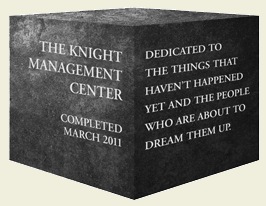Let me quote wikipedia: “Empty calories are a measurement of the energy present in high-energy foods with poor nutritional profiles, typically from processed carbohydrates or fats. An empty calorie has the same energy content of any other calorie but lacks accompanying nutrients such as vitamins, dietary minerals, antioxidants, amino acids, or in the case of refined grains, fiber.”
Empty calories define most fast food, sugary drinks, and popular cereals — so much so that regulators have reigned in advertising low-food-value items to children. (Food conglomerates have responded by adding back vitamins, minerals, etc. to cereals and other prepared foods.)
Why do I raise this? Because an MBA admissions essay — like any other piece of writing — is a meal for the reader. The reader’s hope and quiet prayer is that the text will deliver the informational nutrients they are looking for, with little fat or waste.
Consider something like this: “My journey to this point has been challenging, but the lessons I learned have been most meaningful — I truly have seen that a new beginning is an opportunity to start again, that life’s challenges are the best way to show one’s capability and forge memorable experiences, and that through passion and perseverance one can make a difference in the world.”
Or this: “I believe the best leaders are those who do things for the right reasons, grounded in a thorough understanding of economics, business, strategy, and innovation. I want to be a leader who is open-minded, can manage complex situations, and empowers people.”
Forget the turgid writing and cliche’s-running-amok for a moment. That can be fixed. The point is, even if fixed, there is still nothing there. From the Adcom readers’ point of view there is no nutrition in the text, nothing that tells them anything interesting or specific or memorable about these applicants and why they should be admitted to b-school. There is no data, there is no record of action, no unique insights. Just words taking up space. That is, just empty calories.
The task of MBA essays is to explain your admissions value to Adcom, and you can’t achieve this via empty text. You must present nutrition-laden text, or expect to be dinged.
This means excoriating anything and everything that tends towards vacant, weary generalizations. Cut that to create space for reader nourishment — discussion of specific well-chosen experiences that show you in action, developing unique skills and fresh non-obvious insights about yourself, about your future aspirations, and about management and leadership.
.

